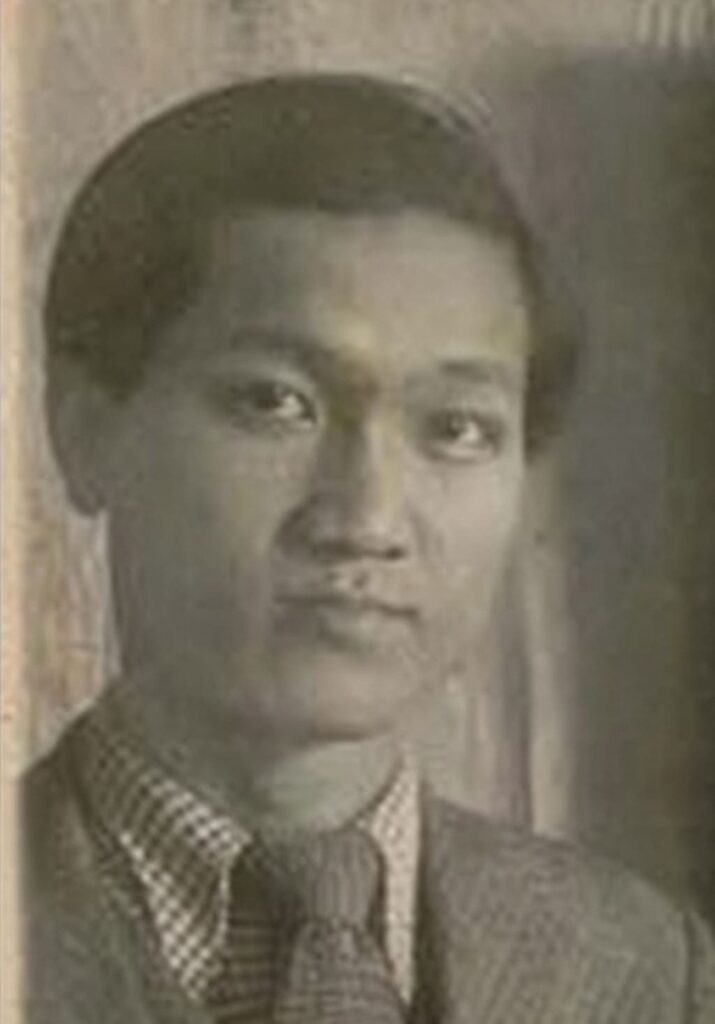Nguyễn Tường Lân: A Master of Vietnam’s ‘Fantastic Four’
Nguyễn Tường Lân (1906–1946) is one of the towering figures of early modern Vietnamese art, celebrated as part of the legendary “Fantastic Four”: “First Trí, second Vân, third Lân, fourth Cẩn.” With exceptional talent in silk painting, oil, and woodblock printing, he left an indelible mark despite the limited number of surviving works. This article takes you through his life, career, and notable artworks, highlighting the precious legacy he left for Vietnamese artwork in the nation’s fine arts scene.
Biography of Nguyễn Tường Lân: From Hải Dương to the Indochina School of Fine Arts
Who is Nguyễn Tường Lân?
Nguyễn Tường Lân was born in 1906 in Chí Linh village, Hải Dương province, into a family steeped in cultural traditions. From a young age, he displayed a natural talent for painting, often sketching familiar scenes of rural Vietnamese life. His life unfolded amid historical upheavals, from French colonial rule to the resistance era, yet his passion for art remained a burning flame.
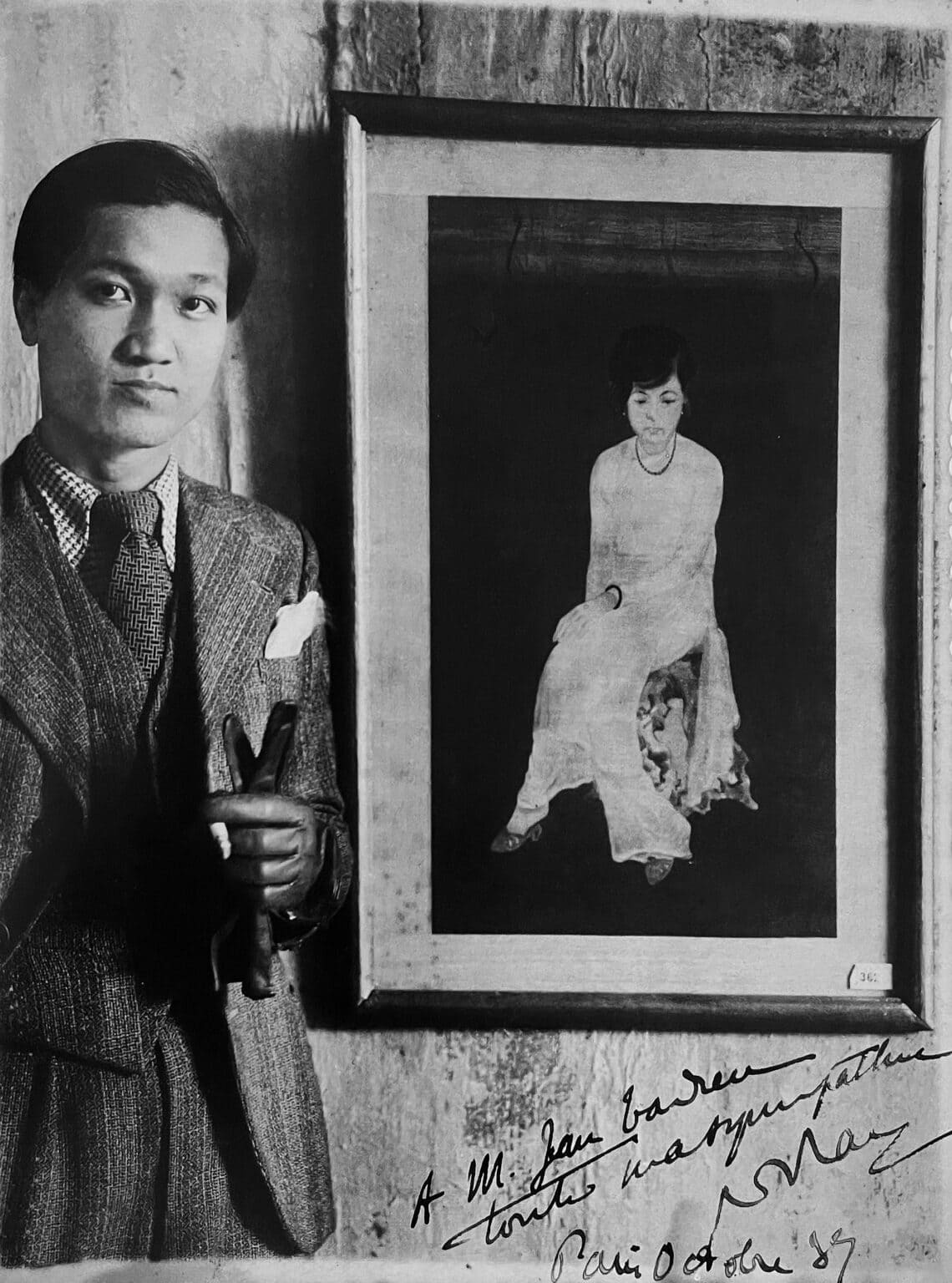
In 1928, Nguyễn Tường Lân enrolled in the fourth course (1928–1933) of the Indochina School of Fine Arts (now Vietnam University of Fine Arts), where he studied alongside luminaries like Nguyễn Gia Trí, Tô Ngọc Vân, and Trần Văn Cẩn. Under the guidance of professors like Victor Tardieu, he mastered Western painting techniques while preserving Vietnam’s cultural identity in his works. After graduating, he opened a studio in Hanoi, renowned for its refined ambiance, complete facilities, and beautiful models, creating an ideal environment for artistic creation.
Tragically, Nguyễn Tường Lân passed away in 1946 at the age of 40, leaving behind a legacy that continues to inspire regret and admiration in Vietnam’s art community. Despite his short life, his biography reflects a gifted artist who tirelessly blended tradition with modernity.
Career of Nguyễn Tường Lân: Pioneering Vietnamese Silk Painting
What is Nguyễn Tường Lân’s Artistic Journey?
Nguyễn Tường Lân’s career was a vibrant journey of innovation, constantly pushing the boundaries of Vietnamese painting. After graduating from the Indochina School of Fine Arts, he quickly established himself with his mastery of diverse mediums, including oil, lacquer, silk, woodblock printing, gouache, and charcoal. His Hanoi studio became a creative hub, producing works that bore his distinctive style.
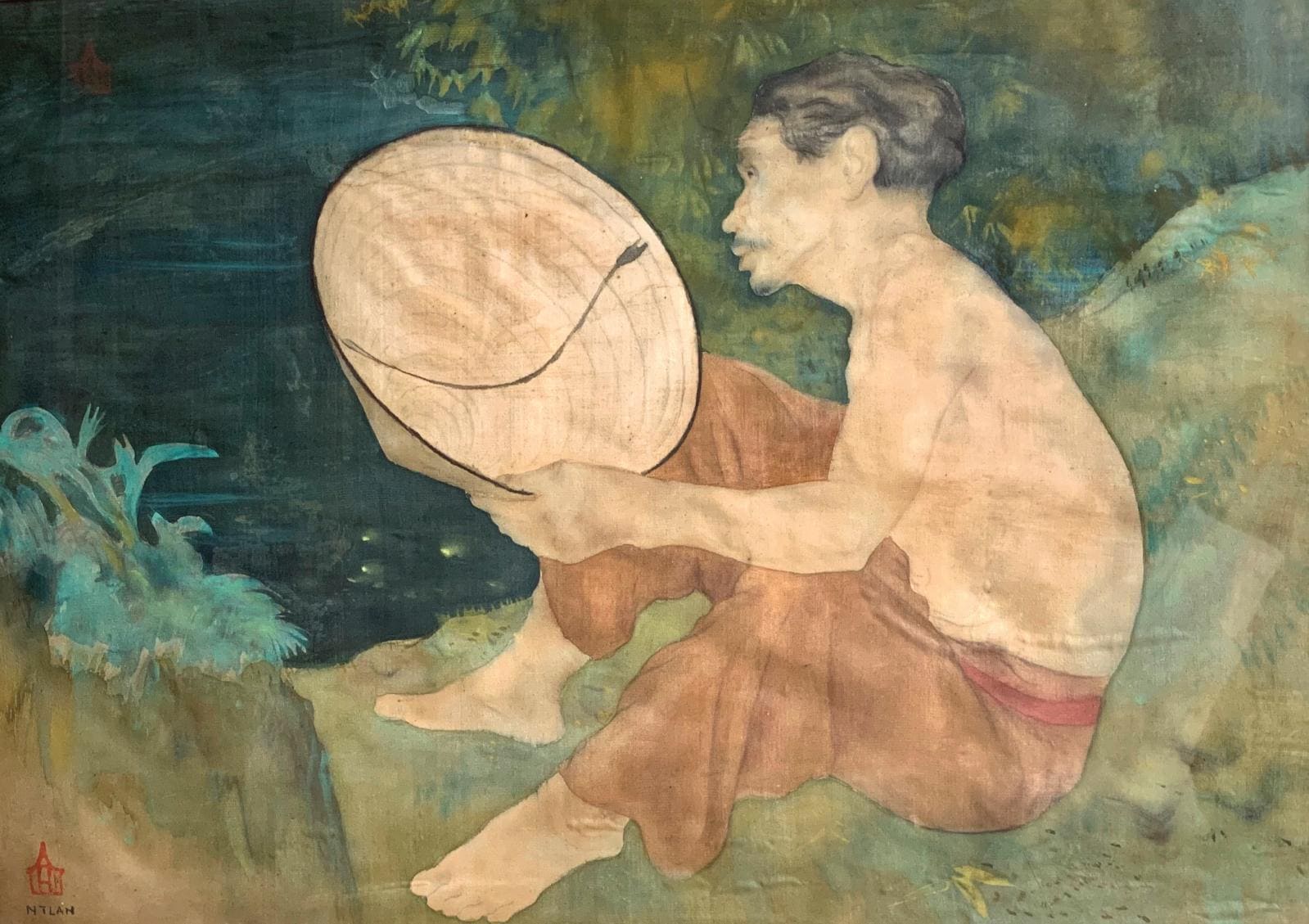
In the 1930s, Nguyễn Tường Lân gained prominence at exhibitions like the 1935 SADEAI Salon, where the newspaper Ngày Nay praised him as one of the rare artists capable of using pure colors harmoniously, creating works that were imaginative, symbolic, yet simple and elegant. He revolutionized Vietnamese silk painting by blending Western techniques with the delicate aesthetics of Eastern art.
By the 1940s, his style evolved, incorporating bold decorative stripes to create a unique rhythmic quality. He also pioneered abstract elements, as seen in his work Hai Thiếu Nữ Bên Cửa Sổ (Salon Unique, 1943). Although many of his works were lost to war, his surviving pieces remain highly valued for their fragility and significance.
Beyond painting, Nguyễn Tường Lân contributed to journalism, teaching, and organizing exhibitions, helping shape Vietnam’s early art community. His career exemplifies the talent of an Indochina-era artist who elevated Vietnamese painting to international acclaim.
Notable Achievements in Nguyễn Tường Lân’s Career
Key milestones in Nguyễn Tường Lân’s career include:
- 1928–1933: Studied at the Indochina School of Fine Arts, laying the foundation for his artistic style.
- 1935: Made a strong impression at the SADEAI Salon with his silk paintings, earning critical acclaim.
- 1940s: Innovated with bold brushstrokes and moved toward abstraction.
- 1946: Passed away, leaving a fragile yet invaluable artistic legacy.

Notable Works of Nguyễn Tường Lân: Surviving Masterpieces of Silk Painting
What Are Nguyễn Tường Lân’s Most Iconic Works?
Nguyễn Tường Lân’s works are celebrated for their elegance, harmony, and poetic quality, particularly in silk painting. Although many pieces were lost to war, the surviving works are cherished by art enthusiasts and displayed in museums. Below are some of his standout creations:
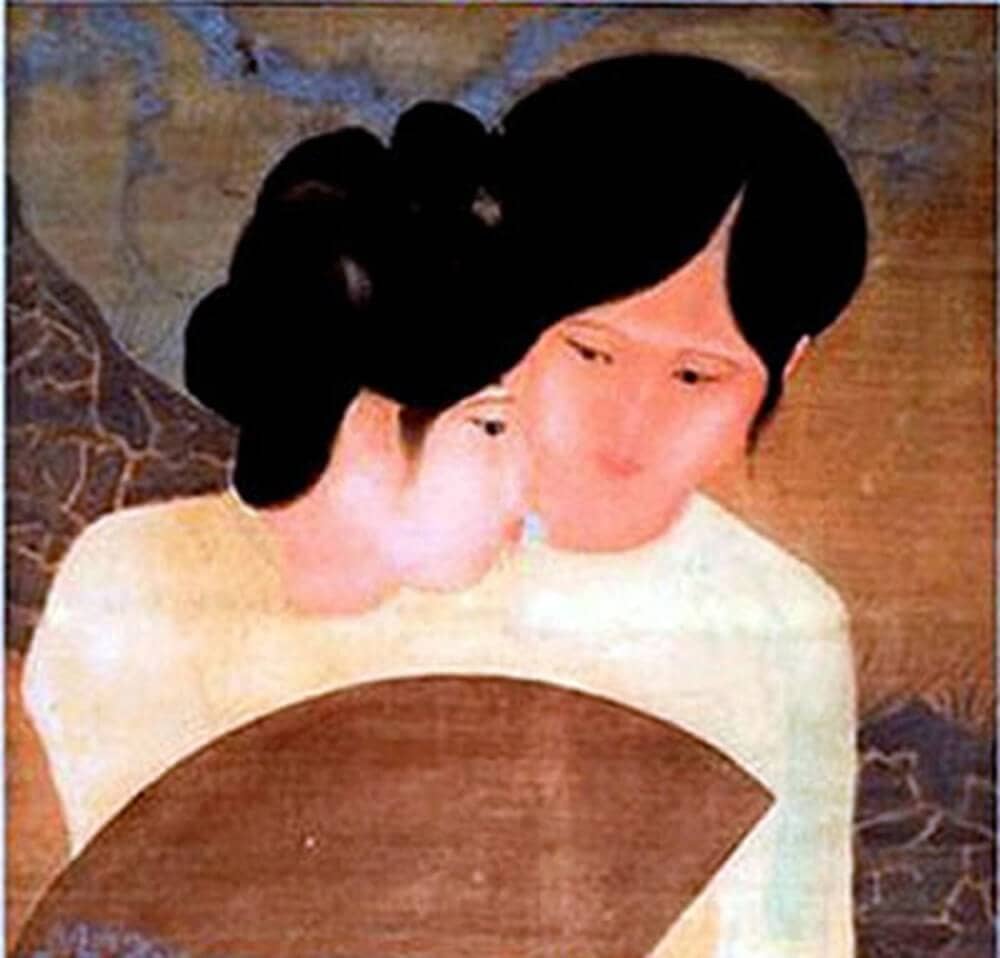
- Hiện Vẻ Hoa (1935): A silk painting depicting a girl seated beneath a curtain, with delicate brushwork reminiscent of Eastern ink wash paintings. Praised by Ngày Nay for its refinement and ethereal quality, it is preserved at the Vietnam National Fine Arts Museum.
- Đôi Bạn: An iconic silk painting illustrating the verse “Who split the moon in two?” This work captures simplicity and depth, portraying two friends in a Vietnamese rural setting.
- Chợ Miền Núi: Depicts a vibrant highland market scene with subtle colors, evoking warmth and liveliness. This piece is also housed at the Vietnam National Fine Arts Museum.
- A La Pagode (At The Temple) (1935): A 50×75 cm silk painting using ink and gouache, auctioned at Christie’s Hong Kong for 1,300,000 HKD. It portrays a spiritual setting with refined color harmony.
- By The River (Bên Bờ Sông): A 44×60 cm silk painting using ink and watercolor, auctioned at Beaussant-Lefèvre for 27,000 Euro. It captures lush bamboo groves and fertile red earth, embodying Vietnam’s rural essence.
- Landscape with Fishing Boats (Phong Cảnh Làng Chài): A 40×104 cm silk painting auctioned at Christie’s Hong Kong, featuring soft purple-blue tones that evoke the poetic charm of ink wash art.
Nguyễn Tường Lân’s silk paintings are not only visually stunning but also rich in cultural and humanistic value. His delicate brushwork and use of subtle accents within bold color blocks create a warm, harmonious effect.
Why Are Nguyễn Tường Lân’s Works Highly Sought After?
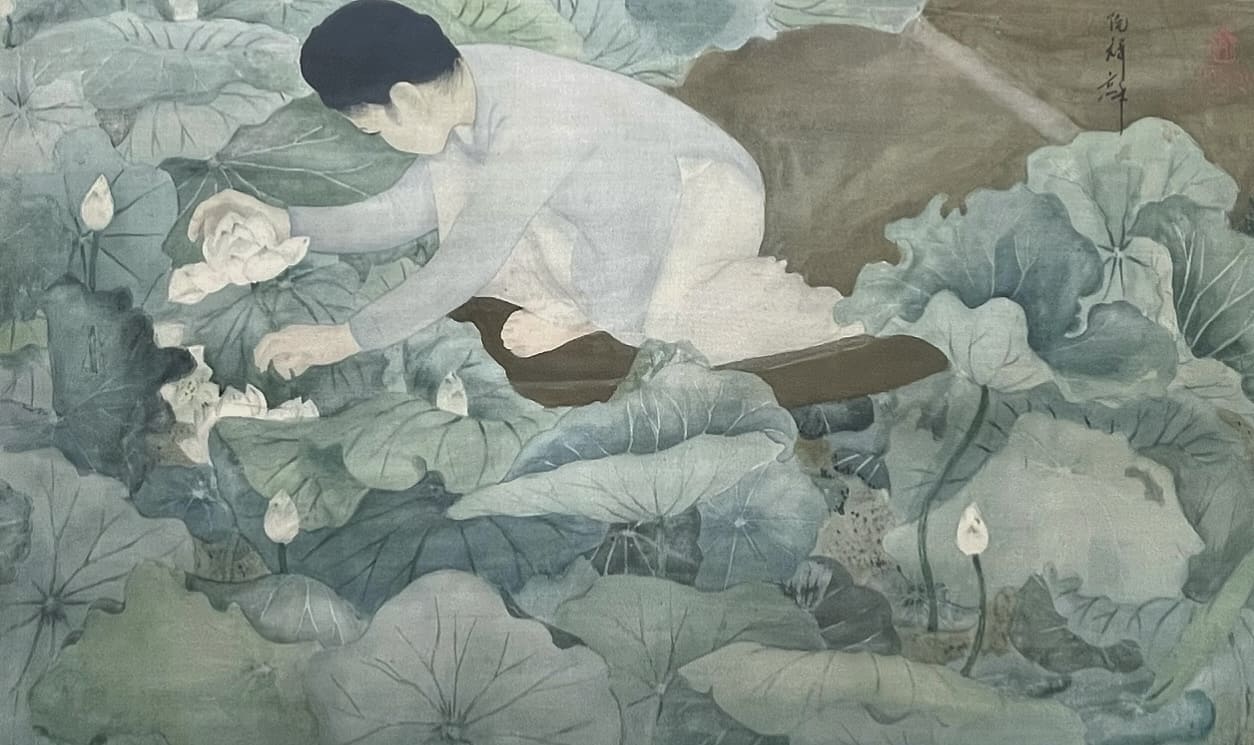
Nguyễn Tường Lân’s works are prized for their unique blend of Western techniques and Vietnamese identity. His confident use of pure colors without fragmenting the composition creates a simple yet captivating effect. Paintings like By The River and A La Pagode have fetched high prices at international auctions, underscoring their timeless appeal.
Legacy in Vietnamese Art: Nguyễn Tường Lân in the ‘Fantastic Four’
What Did Nguyễn Tường Lân Contribute to Vietnamese Art?
Nguyễn Tường Lân is an essential figure in Vietnam’s fine arts legacy, instrumental in shaping the modern silk painting movement. As part of the “Fantastic Four” (Trí, Vân, Lân, Cẩn), alongside Nguyễn Gia Trí, Tô Ngọc Vân, and Trần Văn Cẩn, he laid the foundation for modern Vietnamese art. Despite the scarcity of his surviving works, their artistic value is widely recognized.
Beyond creating, Nguyễn Tường Lân taught and organized exhibitions, fostering Vietnam’s early art community. His style, blending Eastern traditions with Western modernity, inspired subsequent generations of artists. His works preserve images of rural Vietnam, its culture, and its people, helping younger generations connect with their artistic heritage.
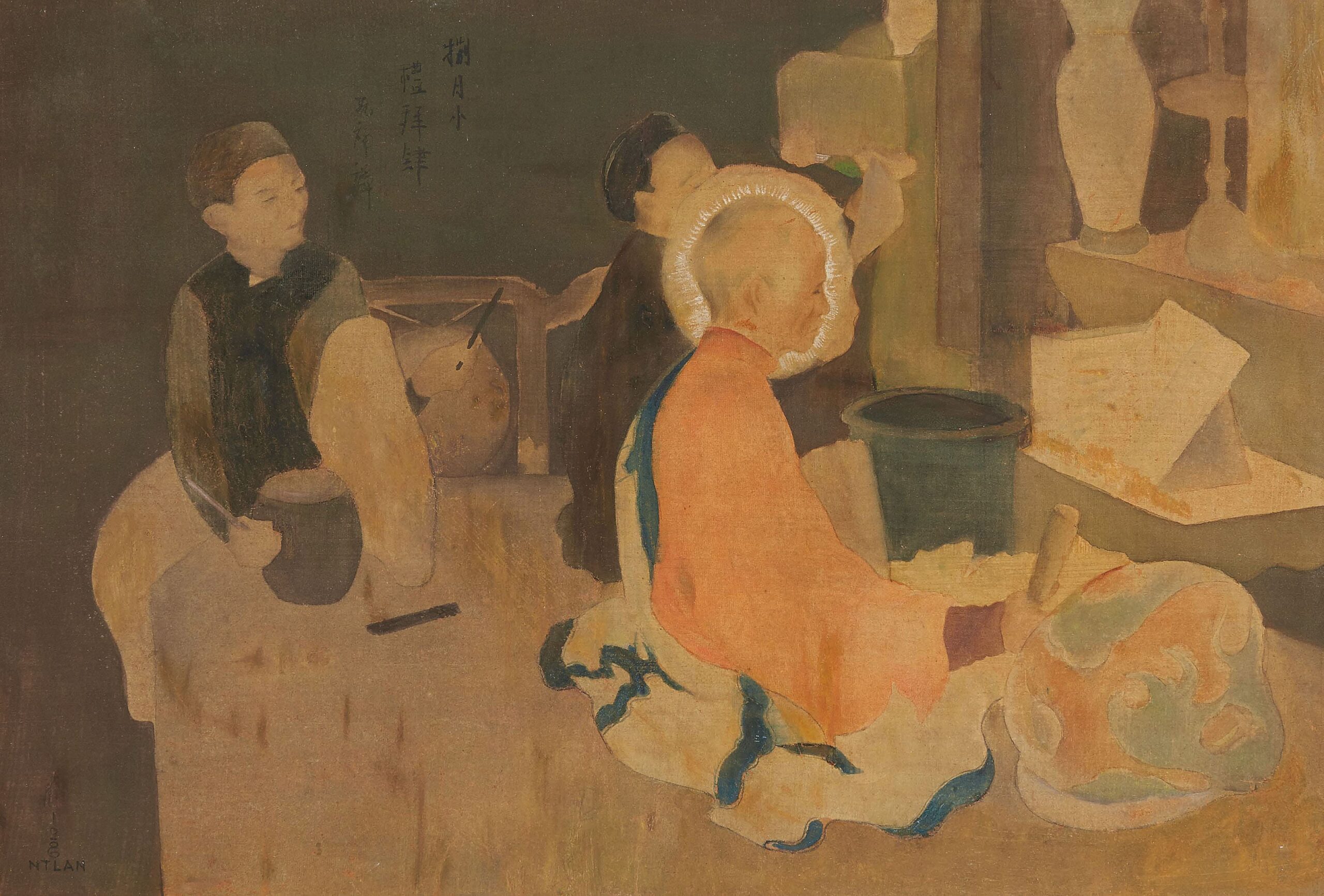
Influence of Nguyễn Tường Lân on Future Generations
Nguyễn Tường Lân’s influence is evident in his pioneering abstract approaches, paving the way for modern artists like Nguyễn Tư Nghiêm and Bùi Xuân Phái. His silk painting techniques, with their refined use of color and brushwork, remain a staple in Vietnam’s art schools. In 2016, exhibitions marking his 110th birth anniversary reaffirmed his enduring legacy.
In conclusion, Nguyễn Tường Lân shines as a star in Vietnamese fine arts, though partly obscured by time. If you love Vietnamese silk painting, visit the Vietnam National Fine Arts Museum in Hanoi to admire his surviving works. His legacy continues to inspire art enthusiasts worldwide.

